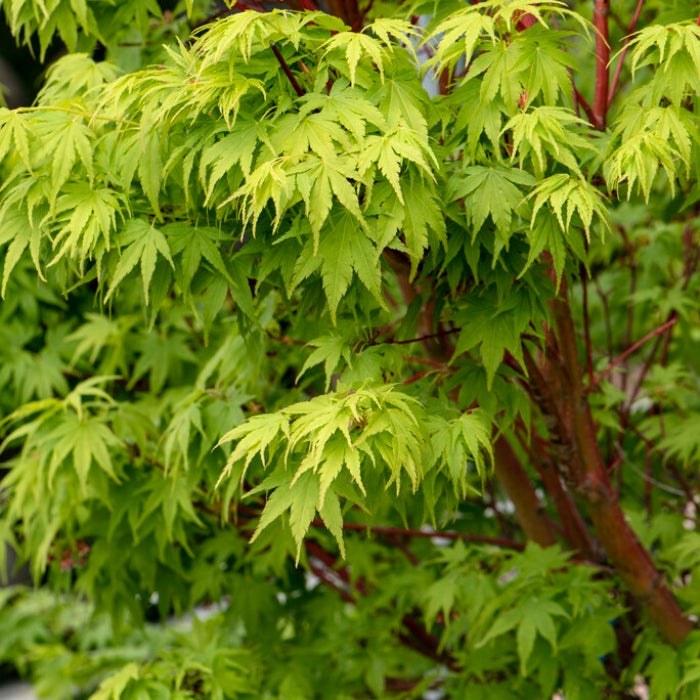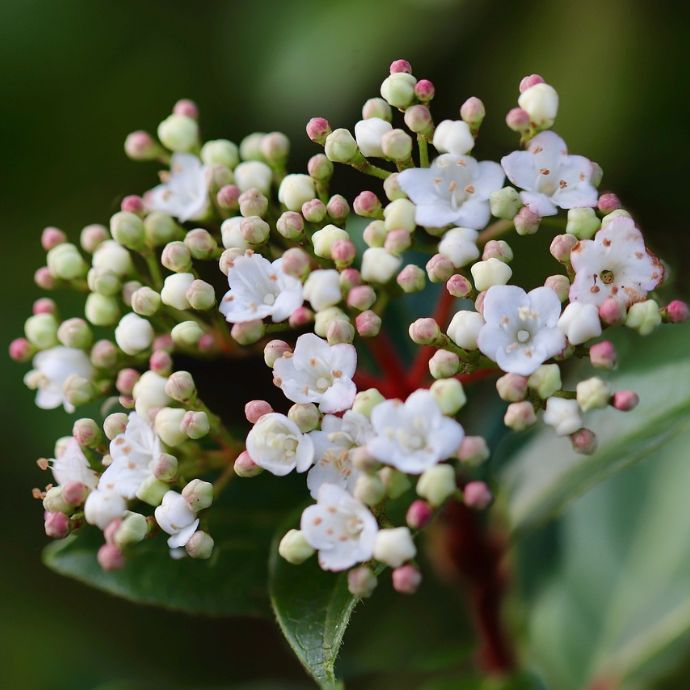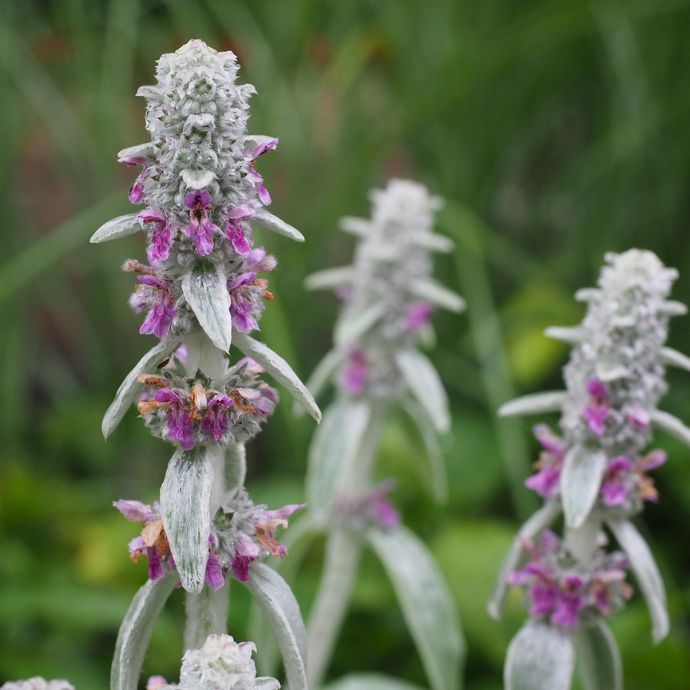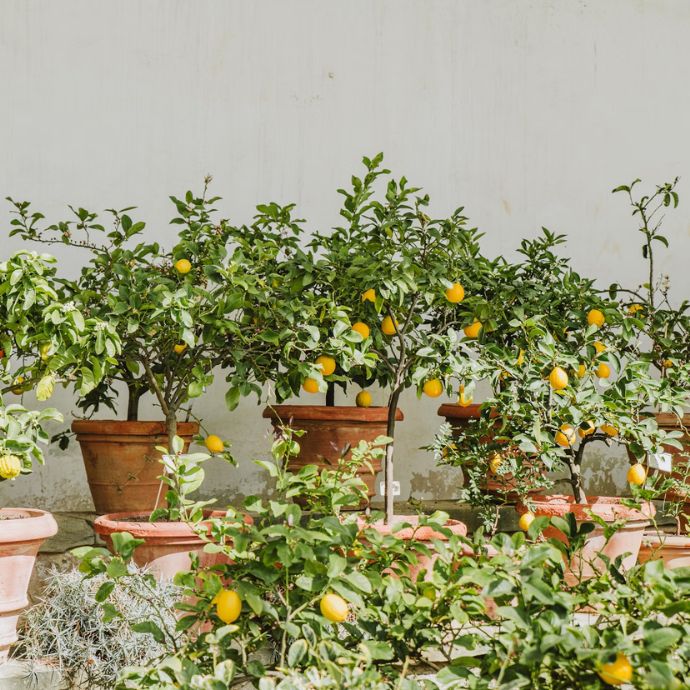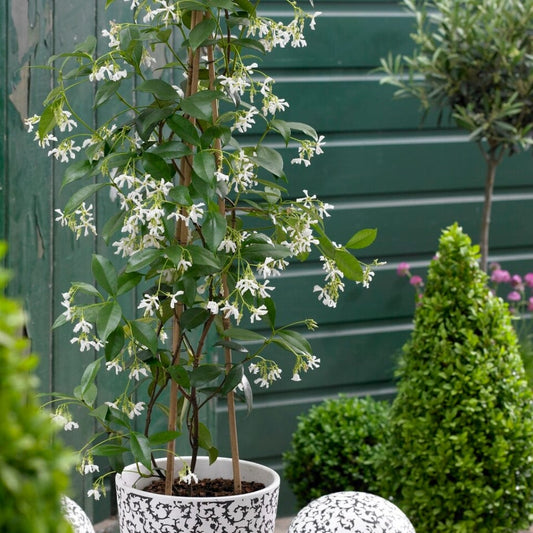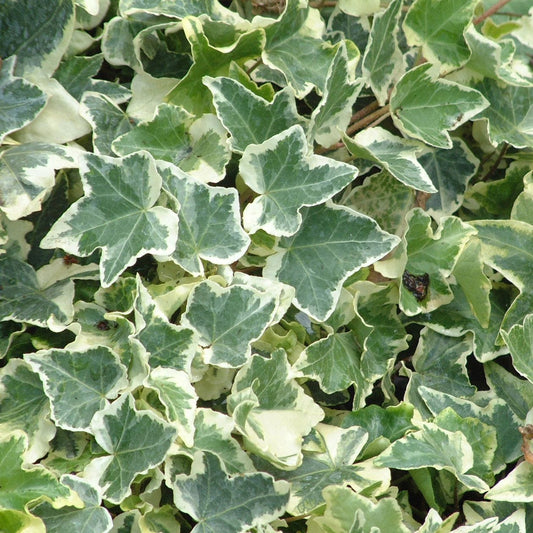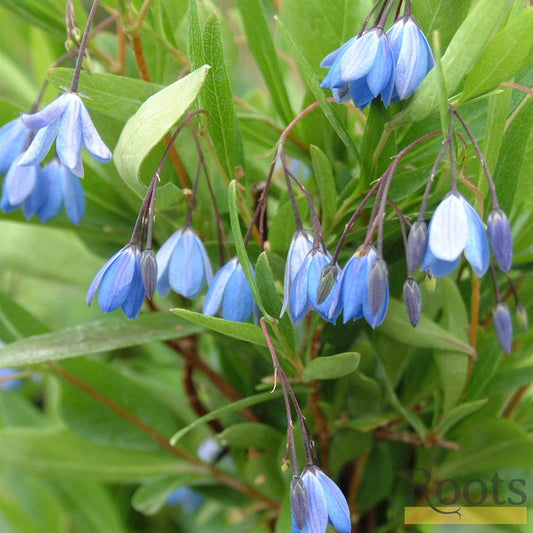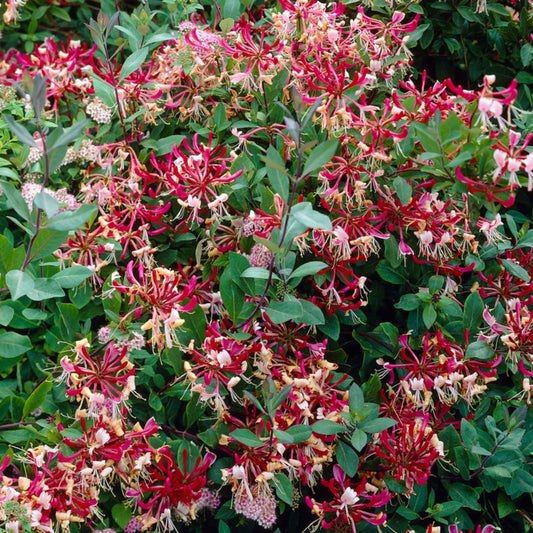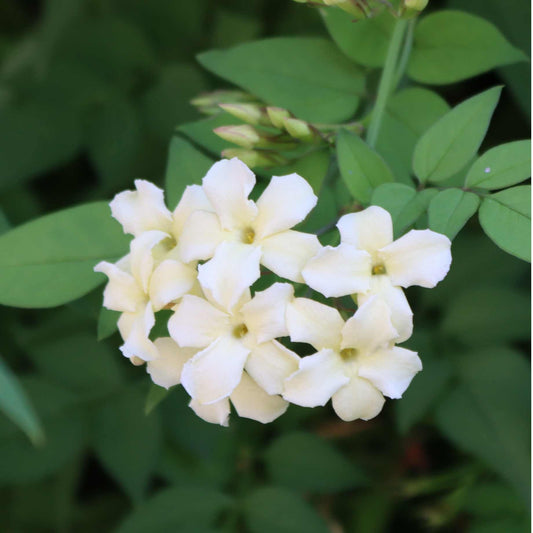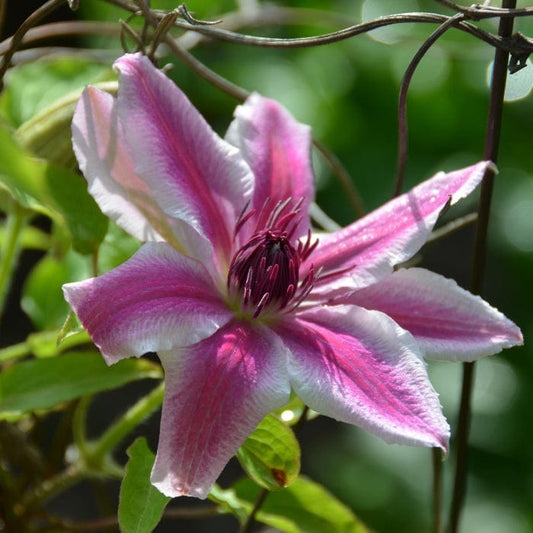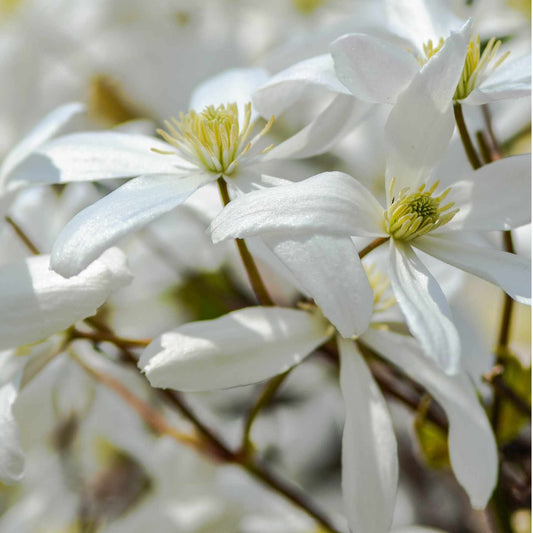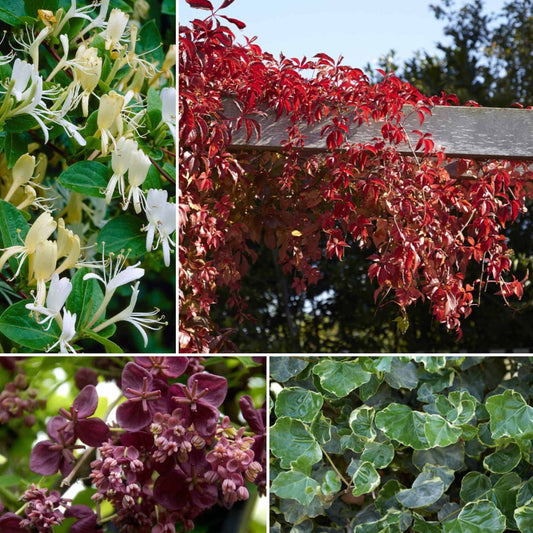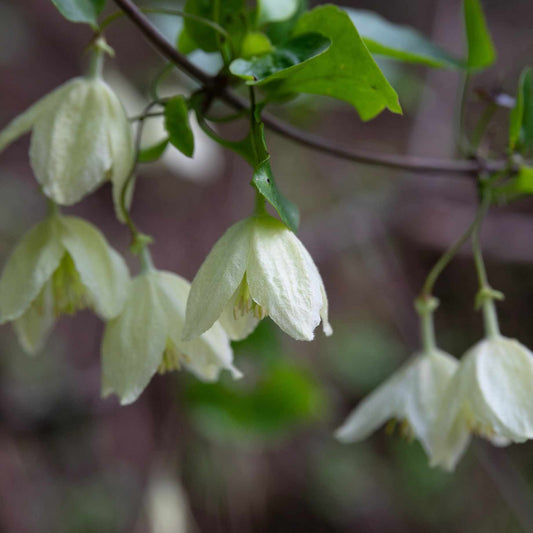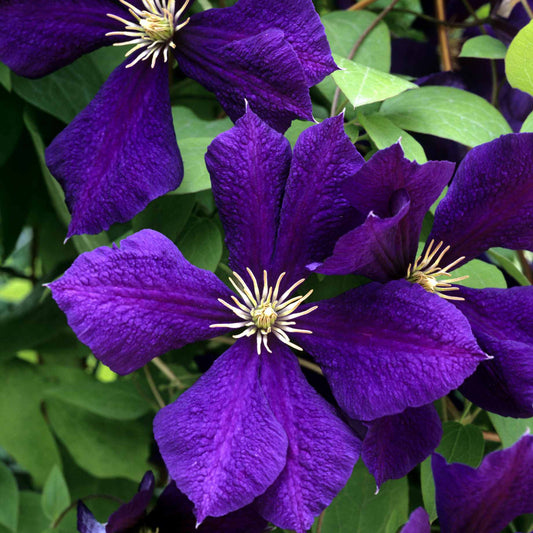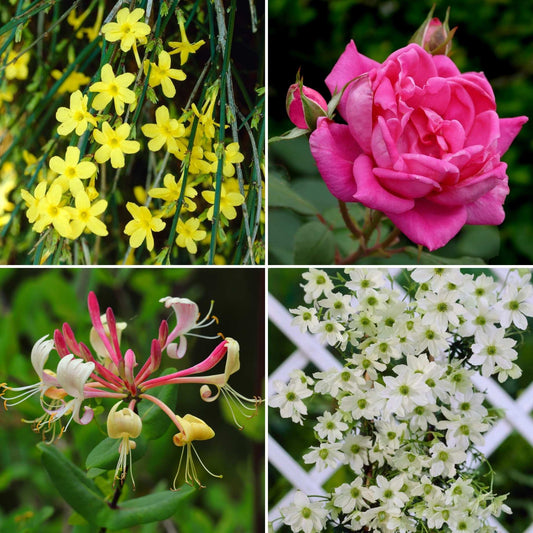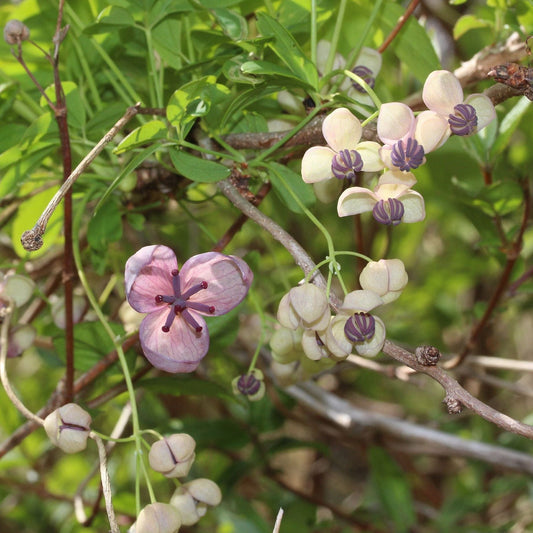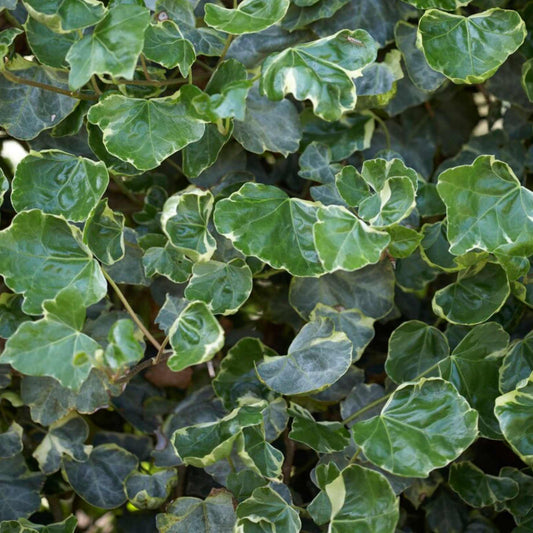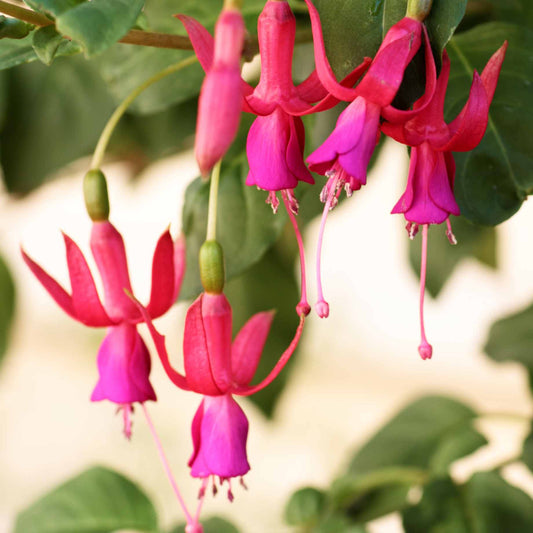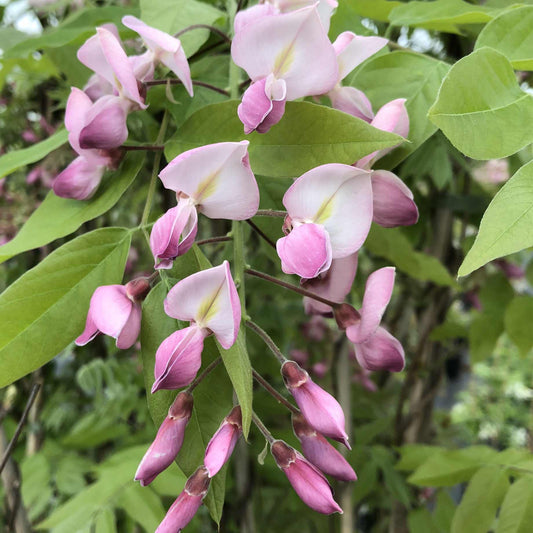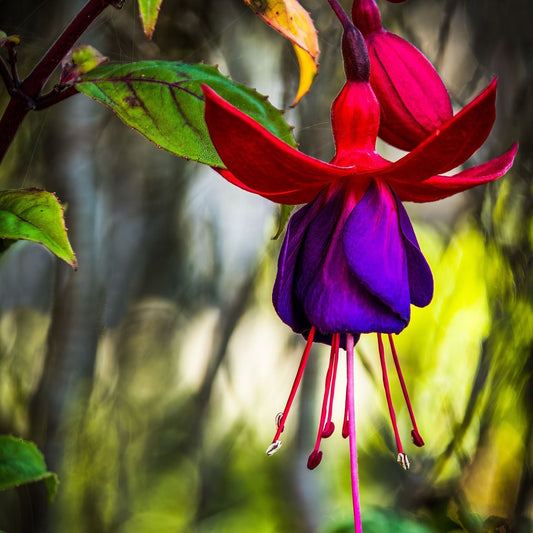Climbing Plants for Shade: Our Top Recommendations
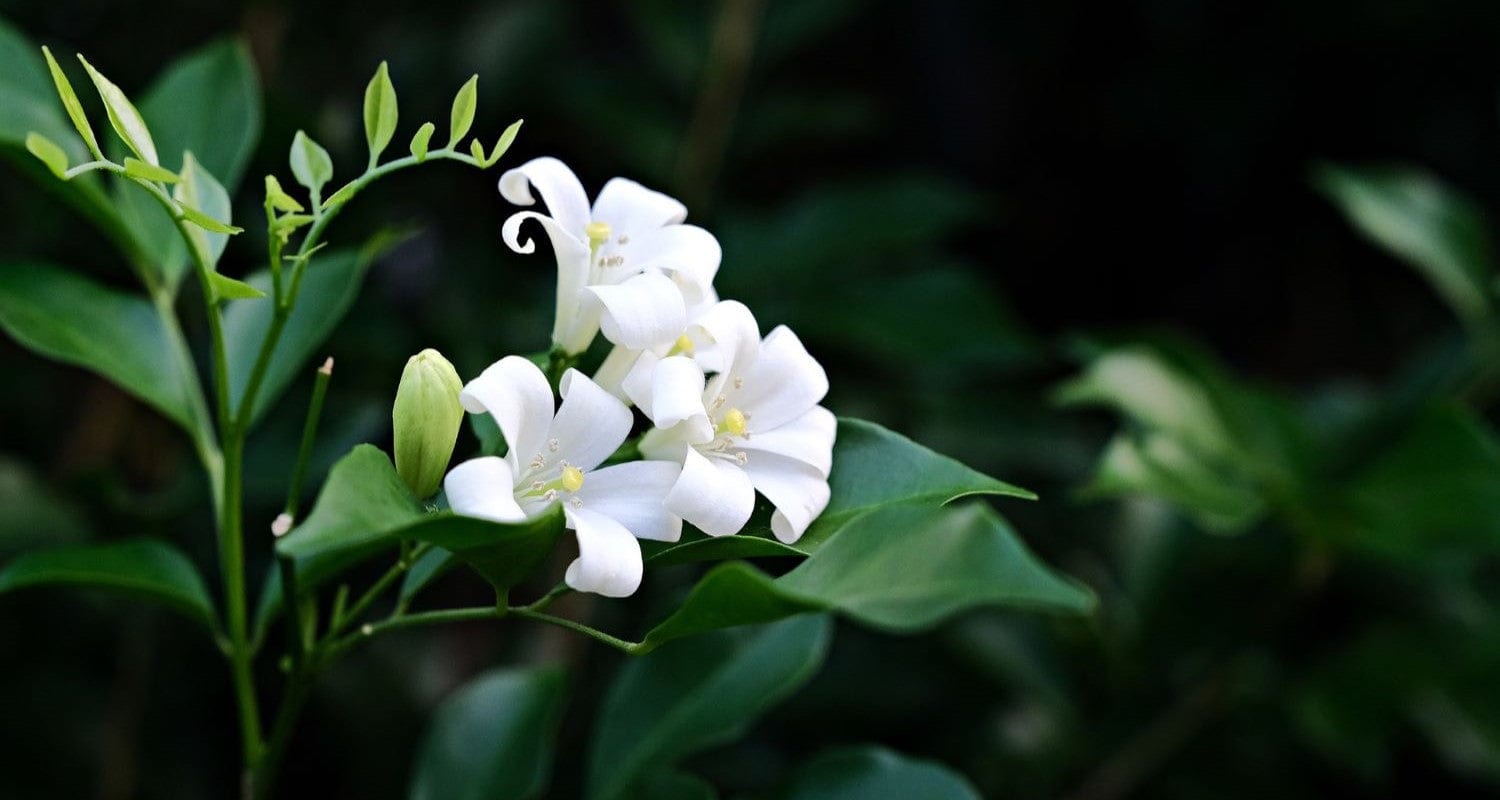
If you want to brighten up a gloomy wall or fence in your garden, then you’re going to need a climbing plant that thrives in partial to full shade. Luckily for you, there’s a wide range of choices, with vibrant foliage, colourful flowers and heady fragrances all on hand to help you make the most of your vertical space. In this post, we’ll be showcasing some of our top climbers for shadier spots.
Jump to:
- Best climbing plant for partial shade
- Best climbing plant for full shade
- Best evergreen climber for shade
- Best flowering climber for shade
- Best scented climber for shade
- Best container climber for shade
- General tips for growing climbers in shade
What is the best climbing plant for partial shade?
Star jasmine
Our pick when it comes to part shade has to be star jasmine. With its snowy white blooms (occasionally yellow or pink depending on the cultivar) and intoxicating floral fragrance, Trachelospermum jasminoides is a real bobby-dazzler.
Though not a true jasmine, botanically speaking, it might as well be, because this plant is just as spectacular as any of the Jasminum genus, and grows really nicely in a sheltered position in part sun.

What is the best climbing plant for full shade?
Ivy
If you’re in a truly shady spot, perhaps a garden overshadowed by a tall apartment block or row of towering trees, then you want the most shade-tolerant climbing plant possible. While there are definitely flowering climbers that boast degrees of shade tolerance, the deeper the shade, the more we’d recommend opting for a foliage plant, instead. Particularly ivies.
Ivy brightens up any unsightly wall or fence and provides fast-growing coverage in both partial and full shade. It undoubtedly makes a good backdrop for flowering climbers, but also possesses a classical, timeless elegance all on its own. We love the lime and emerald tones of Hedera colchica ‘Dentata Variegata’ and the frilled, ivory edged leaves of Hedera ‘Clotted Cream’.

What is the best evergreen climber for shade?
Asiatic jasmine and bluebell creeper
For true year-round interest, it’s worth picking an evergreen climber whose leaves are retained throughout the year, rather than be shed come the autumn months. There are a few evergreen climbers tolerant of shadier conditions, including the aforementioned star jasmine and ivy plants, as well as plants such as the Asiatic jasmine (Trachelospermum asiaticum) and bluebell creeper (Sollya heterophylla) – both of which can grow nicely in part shade.

Credit: Flickr (Arthur Chapman)
What is the best flowering climber for shade?
Honeysuckle
There are so many amazing climbers that could win this category, but we can’t look past the not-so-humble honeysuckle. These bugle-bloomed beauties grow naturally in woodlands, thriving in partial and dappled shade.
Alongside their fabulously distinctive flowers, these climbing plants also radiate a gorgeous fragrance (and could easily have made it to the top spot for our next category). We’re particularly fond of varieties like Hall’s Japanese honeysuckle and ‘Belgica’ early Dutch honeysuckle. Plus, these plants are a haven for pollinators, too!

What is the best scented climber for shade?
Common jasmine
Like so many of the plants on this list, there could have been many winners, but in the end we decided that jasmine was worthy of the title of best scented climber for shade. Now, again, it’s worth highlighting that while your jasmine will grow nicely enough in part shade, it will definitely be more floriferous in full sun.
That said, you should still get plenty of blooms even in a slightly more shaded position. Plant common jasmine along pathways or over a pergola to make the most of its rich aroma, which strengthens later in the day.

What is the best container climber for shade?
Clematis
When it comes to container-growing a climber in shade, then clematises are generally good bets as they like their roots cool and shaded. They do like some sun on their vines and flowers, though, so a partially-shaded spot is ideal, rather than full shade.
The best clematis cultivars for container growing include ‘Carnaby’, ‘Niobe’ and ‘Miss Bateman’. Less vigorous honeysuckles and some jasmines can also grow nicely in pots. Make sure to check out our guide on climbing plants for pots for more information.

Credit: Flickr (F. D. Richards)
General tips for growing climbers in shade
There are a few things worth bearing in mind when growing climbers in shadier parts of the garden.
1. Don't let your climber dry out
Firstly, it’s important – as with most plants – not to let your climber(s) dry out. This is especially important for climbing plants grown in pots, as the compost in a container dries out more quickly than soil in the ground.
2. Feed in spring (generally)
Another tip is that most climbing plants will appreciate a general springtime feed each year. While specific feeding requirements will vary from plant to plant, an application of balanced slow-release fertiliser is typically going to do the trick just fine.
3. Tie in your climber
Also, make sure to tie your plant into a support of some sort (apart from ivy which can self-cling). Garden twine is perfect as it won’t dig too harshly into the plant’s stems.
Final thoughts
Just because you don’t live with the horticultural equivalent of a sunbed outside of your back door, doesn’t mean you shouldn’t still be able to grow some amazing climbing plants.
Hopefully, having read this you’ll have a good idea about which climbing plant is right for your own needs. While you’re here, make sure to check out a couple of our other climber guides, including the best climbing fruit plants and how to prune climbers.
Last updated: 17/10/2025
